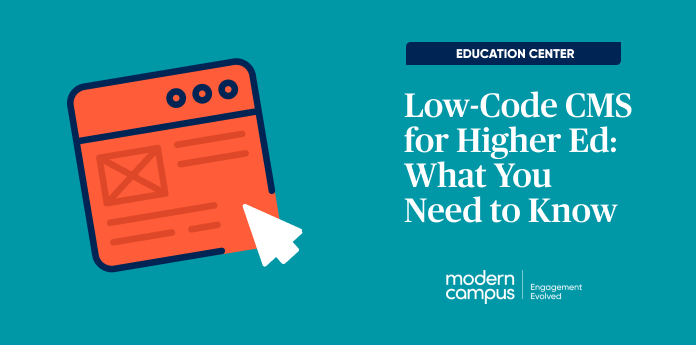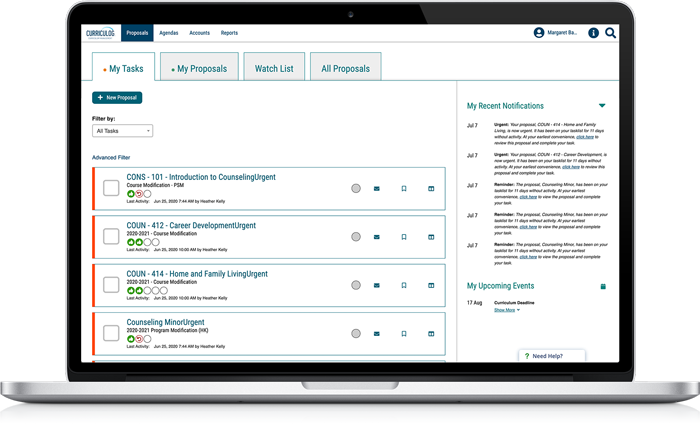Higher education software today looks nothing like it did 20 years ago, and educational institutions have greatly benefited from a wide range of its advancements. In a world of consumerism, students expect their institution to provide seamless digital experiences—yet many universities struggle with disconnected or outdated systems. Though paper-based processes still linger in some areas, modern campuses rely on an ecosystem of digital solutions to manage everything from enrollment to student engagement.
For anyone outside the IT department, this patchwork of technologies can feel overwhelming. The acronyms alone—SIS, LMS, CRM, ERP—can be daunting. What separates a student information system (SIS) from a learning management system (LMS) might seem trivial, but understanding these differences is key to building a tech stack that supports institutional success.
As institutions adapt, having the right technologies in place can mean the difference between an efficient, student-centered experience and an outdated, fragmented one. The right tech stack should streamline operations, enhance student engagement and drive institutional growth—all while integrating seamlessly.
In this guide, you'll get a brief overview of each major piece of your institution’s tech stack and why it’s critical to your goals. You'll learn:
- What is a higher education technology (tech) stack?
- What are the major systems in higher ed technology?
- What does each major system do and why does it matter?
- How can you get the most out of your higher ed technology?
By the end, you’ll have a clear roadmap for assembling a modern, future-proof tech stack that enhances both student and administrative experiences.
Understanding Where Higher Education Software Fits into Institutions’ Needs
Institutions face unique challenges and goals that require specialized software solutions. These institutions must manage complex administrative tasks, provide high-quality education and ensure student success. To achieve these goals, institutions rely on various higher ed software systems, including Enterprise Resource Planning (ERP), student information systems and learning management systems.
Unique Challenges and Goals
They also face several unique challenges, including managing large amounts of student data, providing financial aid and ensuring student success. These institutions must also comply with various regulations and standards, such as FERPA and GDPR. To overcome these challenges, higher ed institutions require software solutions that can streamline administrative tasks, provide real-time insights into student data and support student success initiatives.
What Is a Higher Education Tech Stack?
A higher ed technology stack—or institutional technological infrastructure—refers to the various systems and applications required to manage and deliver higher education.
Higher education ERP systems are a crucial component of this tech stack, integrating various administrative functions to streamline operations.
The exact layout of systems can vary greatly among institutions, depending on the size and purpose of the organization. Nonetheless, successful institutions maintain a similar and consistent layout—which you’ll learn below.
What Are the Major Systems in Higher Education Technology?
The modern institution’s infrastructure can consist of hundreds of applications and programs. Unless you’re a technology expert, you only need to know the fundamentals. For starters, school administration software integrates functionalities like student information systems, human resources and financial management to enhance administrative efficiency.
Core Administrative Systems
These form the backbone of institutional operations, managing essential business functions and data. From student records to HR and finance, these systems handle the critical day-to-day operations that keep an institution running:
- ERP (Enterprise Resource Planning) System
- SIS (Student Information System)
- Non-Traditional SIS
- Faculty/Staff Management System
Academic & Learning Systems
These platforms support the educational mission and curriculum delivery, enabling institutions to create, manage and deliver high-quality educational experiences. They form the academic core of the digital campus:
- LMS (Learning Management System)
- Catalog Management System
- Curriculum Management System
Student Experience & Engagement
These tools help institutions connect with and support students throughout their journey, from orientation through graduation. They're essential for building strong relationships and ensuring student success:
- Student Engagement/Retention System
- Student Communication Platform
- Student Portal
Marketing & Outreach
These solutions help attract and communicate with prospective and current students, managing the institution's digital presence and communications strategy. They're crucial for enrollment growth and stakeholder engagement:
- Customer Relationship Management System (CRM)
- Content Management System (CMS)
- Email Marketing System
Specialized Management Systems
These platforms address specific operational needs that require dedicated solutions. While more focused in scope, they're vital for institutions offering comprehensive campus experiences:
- Event Management System
- Athletics Management System
Understanding how these systems work together is crucial for institutional success. While each serves a distinct purpose, their true power comes from integration—creating a seamless digital ecosystem that supports both operational efficiency and student success.
The key is ensuring these systems can communicate effectively with each other while maintaining data integrity and security. For institutions looking to modernize their tech stack, starting with a clear understanding of these core components helps inform strategic decisions about which solutions will best serve their specific needs and goals.
What Does Each Major System Do, and Why Does It Matter?
Below are the biggest pieces of the modern institution’s tech stack, with descriptions explaining what these systems do and why it matters to the success of an institution.
Enterprise Resource Planning (ERP) System
What it does: An ERP system is a comprehensive software solution that integrates various administrative functions, including financial management, human resources and student information management. ERP systems provide higher ed institutions with a centralized platform to manage their operations, make data-driven decisions and improve student outcomes.
Higher ed ERP systems typically refer to the software that integrates all of your school’s separate digital functions, streamlining administration, enhancing communication among staff and students and integrating various business processes.
Why it matters: ERP systems are crucial for running a business as sweeping as a higher ed institution. They allow you to manage and track every single piece of data that comes into and out of the school. An ERP system can be seen as a “host” or “mediator” for systems with more specific functions, listed below.
Student Information System (SIS)
What it does: A student information system is an online platform that allows staff and prospective and current students in credit-bearing programs to access and input all the information pertaining to their interaction(s) with an institution. They allow learners to register and pay for courses, see their grades, access transcripts and manage a multitude of other student needs—all while maintaining and tracking this data for administrators to access with equal ease. They are sometimes referred to as “student management systems” (SMS).
Why it matters: Your SIS is the hub for all student information. Any interaction a staff member or administrator has with a student—even information stored automatically by the system—is accessible through an SIS. Without one, it's nearly impossible for administrators to keep track of key student data. And it’s impossible for learners to interact with the institution online.
Non-Traditional SIS
What it does: A non-traditional student information system (or student management system) is an SIS built specifically for Continuing Education and Workforce Development units to manage non-credit education.
Why it matters: A standard SIS built for credit-bearing education cannot effectively manage and engage non-traditional learners. Their functions are too rigid to deliver the experience non-credit learners expect and non-credit administrators need to manage their offerings. Any continuing education (CE) unit can tell you how difficult it is to do so much as offer a non-semestered program with a standard SIS:
The framework for main campus technologies can't effectively support even minor deviations without requiring several patch ups. Problems like this abound when using a traditional SIS for non-traditional education. A non-traditional SIS allows for a single platform for all non-credit offerings and enables non-credit units to manage and drive lifelong learner engagement.
What Is a Non-Degree Student Management System?
Explore the ins and outs of the cornerstone of continuing education management software.
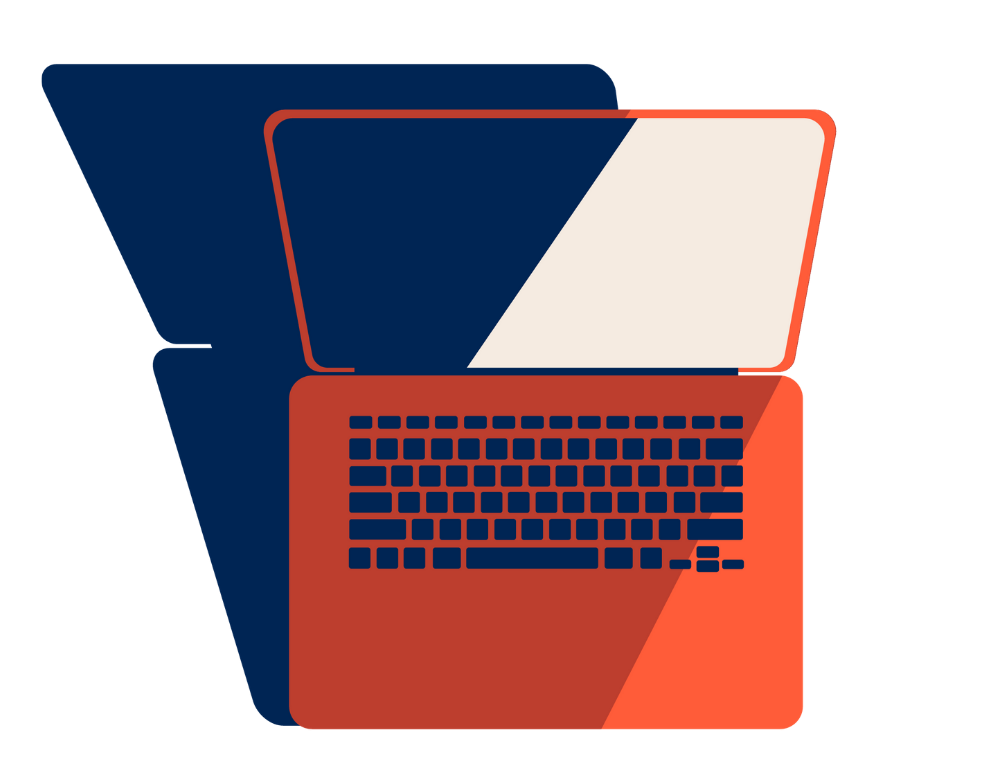
Learning Management System (LMS)
What it does: Learning management systems are higher ed software applications that manage all aspects of the learning process. They are where the learning content for each of your programs and courses live.
Why it matters: An LMS is used by enrolled learners and course instructors every day to engage with and submit learning content to. Without an LMS, an institution cannot deliver key learning experiences to learners.
Web Content Management System (CMS)
What it does: Content management systems are software programs that make it easy for higher ed professionals to create and manage website pages and content.
Why it matters: A CMS purpose-built for higher ed should have built-in features that transform a college website into a highly personalized, high-conversion web experience. These features include personalization capabilities to engage students at every touchpoint, a simple layout builder so that content contributors can quickly create and build dynamic web pages, streamlined reporting functions, accessibility checks, fail-safe security and robust extensibility and integration—all backed by superb customer training and support.
Web Content Management System (CMS)
What it does: Content management systems are software programs that make it easy for higher ed professionals to create and manage website pages and content.
Why it matters: A CMS purpose-built for higher ed should have built-in features that transform a college website into a highly personalized, high-conversion web experience. These features include personalization capabilities to engage students at every touchpoint, a simple layout builder so that content contributors can quickly create and build dynamic web pages, streamlined reporting functions, accessibility checks, fail-safe security and robust extensibility and integration—all backed by superb customer training and support.
Customer Relationship Management System (CRM)
What it does: A customer relationship management system manages most aspects of your students' business relationships with the institution. A CRM enables easy contact management, sales management and agent productivity. It can be used to streamline marketing, sales, digital commerce and customer service operations. CRMs are essential marketing tools and are best when used to track and grow customer relationships.
Why it matters:Students are customers, and a modern institution must have software built to nurture their journey as buyers. A CRM provides valuable insights about learners at your institution and can be connected to your institution's SIS for added efficiency.
Catalog Management System
What it does: Catalog management software automates the administrative processes of managing and displaying courses and programs online.
Why it matters: Many institutions experience catalog management as a time-consuming and error prone process. Many colleges and universities don't even offer digital catalogs; they display courses and programs through static PDFs or catalog management services that are manual and prone to errors. With this, it's essential to have higher ed software that streamlines the creation and delivery of digital catalogs.
The Pitfalls of PDFs
Discover the eight pitfalls higher ed institutions experience when using PDF catalogs and what you can do to remedy these challenges with best-in-class catalog management software.

Curriculum Management System
What it does: A curriculum management system improves and streamlines the processes of curriculum development and implementation at your institution.
Why it matters: Robust curriculum management is how modern institutions provide aligned, clear and evaluated curriculum that students need to succeed. It lets program developers and administrators respond faster to student needs by automating curriculum approval processes built for today's distributed digital workplace.
Curriculum Management | Modern Campus Curriculum
Respond faster to student needs in the evolving job market by automating curriculum approval processes built for today's distributed digital workplace.
Learn how.Student Engagement & Retention System
What it does: A student engagement and retention system is a learner-facing platform that drives student persistence by improving engagement with co-curricular programming. Platforms can track student participation at events, conduct polls and quizzes, implement co-curricular learning tracks and incentive participation in student activities via gamification. Some student engagement systems interact with students by offering direct communication with learners via mobile apps.
Why it matters: Student engagement is at an all-time low, and there is data to suggest that engaged students perform better and experience greater satisfaction with their academic experiences. Student engagement software also captures student insights that allow academic and student professionals to make better decisions about programming.
Student Communication System
What it does: A student communication platform guides students to necessary actions (I.e. registering for a class) by “nudging” them based on key attributes. Many systems are set up for simple 1-on-1 texting but can also be set to confer with many students at once. More advanced technology enables staff to scale their communication to quickly identify students that need help and reduce staff workload with automation.
Why it matters: Students are living in an age of information overload. They need information that's personalized and relevant to their learning journey - both in and outside the classroom. Strong communication platforms also move the answering of redundant questions to AI or automation while giving professionals time to focus on the students who need them most.
Marketing Automation System
What it does: Marketing automation systems allow your institution to plan, execute and monitor email marketing campaigns to learners and professionals.
Why it matters: Digital marketing is essential to the modern institution's success. Learners don't always seek out institutions or opportunities themselves, even when a particular course offering or event may be precisely what they need.
A marketing automation system avoids the hassle of initiating and maintaining email campaigns with each specific learner, making it easy for your marketing team to focus on other efforts. When integrated into your SIS or Non-Traditional SIS, higher ed institutions can gain full-funnel visibility for enrollments from a single system-of-truth and increase overall enrollment.
Student Portal
What it does: Student portals are online applications that allow students to access, via your institution's website, important program information and administrative information that's personalized to them.
Why it matters: Student portals are often the sole access point for everything an enrolled student needs from your institution. They are frequently the gateway to information offered through other applications on this list. A leading Student Portal will allow students to conduct most administrative tasks—like adding or dropping courses, accessing receipts, requesting transcripts and accessing grades—at their convenience.
With the Student Portal, we significantly improved our student experience and that has made a difference for re-enrollment.
Faculty/Staff Management System
What it does: Faculty and staff management systems allow administrators to track and manage all details pertaining to your institution's staff. These systems allow institutions to input, store and find data about staff and faculty activities, performances and other administrative necessities.
Why it matters: The number of people working at any one institution can be intimidating, which makes it all the more necessary to have a single source of truth for all faculty and staff data. The collection of key data is most often automated for efficiency's sake.
Event Management System
What it does: Event and conference management systems help your institution's event organizers plan, execute and report on events and conferences. They are hubs for all data pertaining to the event or conference—from management and scheduling to marketing and analytics.
Why it matters: At a time when many institutions are eager for new streams of revenue, events and conferences are taking the stage as opportunities to expand your institution's reach. Having a platform that supports smooth event and conference management provides concise administration, which can often make the difference between a successful and unsuccessful event.
What is Conference Management for Higher Ed?
Explore the unexpected benefits of conference management software that's designed for schools like yours.

Athletics Management System
What it does: Athletic/athlete management systems are built to satisfy the unique digital requirements of your institution's sports staff. Though systems vary greatly in capability and breadth, they all help manage athletic and athlete information. Many maintain historical, biographical and relevant medical information. They also track student eligibility, set up financial aid, streamline recruiting, organize marketing campaigns and much more.
Why it matters: The needs of your sport staff are wildly different from those of your academic faculty. These systems help your athletics departments remain compliant, communicate and operate more efficiently by using processes tailored to the unit's unique needs.
Benefits of Higher Education Software
Higher ed software provides numerous benefits to institutions, including improved student success, increased efficiency and enhanced decision-making. These software solutions can help institutions streamline administrative tasks, provide personalized support to students and gain real-time insights into student data.
Financial Aid Management
Financial aid management is a critical function in higher ed institutions, as it enables students to access financial resources to support their education. Effective financial aid management requires specialized software solutions that can streamline financial aid processes, provide real-time insights into student data and ensure compliance with regulations.
How Can You Get the Most Out of Your Higher Education Technology?
Higher ed technology is most effective when every system in your tech stack is best-in-class and seamlessly integrated. The ideal tech stack is a purpose-driven ecosystem where each piece plays a distinct role that others cannot replace.
For example, a traditional SIS may be well-equipped for managing learners in credit-bearing programs, yet it often falls short in supporting non-traditional and lifelong learners. Similarly, a standard CMS may serve a broad audience, but one designed specifically for higher education can better optimize engagement and conversions by delivering personalized experiences to prospective and current students.
To truly streamline operations and enhance student engagement, institutions must prioritize solutions built specifically to serve the unique demands of higher ed. Modern Campus is a leader in student engagement and lifecycle management, providing purpose-built solutions that seamlessly integrate into your existing tech stack while addressing the needs of both traditional and non-traditional learners.
From a dynamic CMS tailored for higher ed to flexible enrollment and student engagement tools, we ensure that institutions can adapt, innovate and thrive in an evolving digital landscape. Request a demo today and discover how Modern Campus can help you build a future-ready digital campus.

Webinar
How to Increase Your Continuing Education Revenue by 19%
How continuing and workforce education divisions are leveraging technology to drive registration and revenue—and seeing exciting and immediate results.
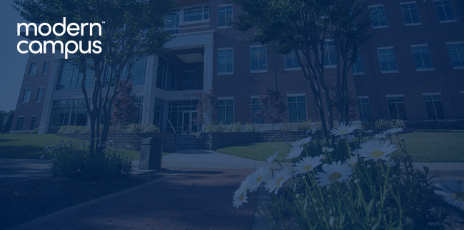
Case Study
Impressing Accreditors & Improving Student Success Through Data at Arkansas Tech University
How a public university harnessed a wealth of data to influence and support accreditors, students, and institutional leaders.
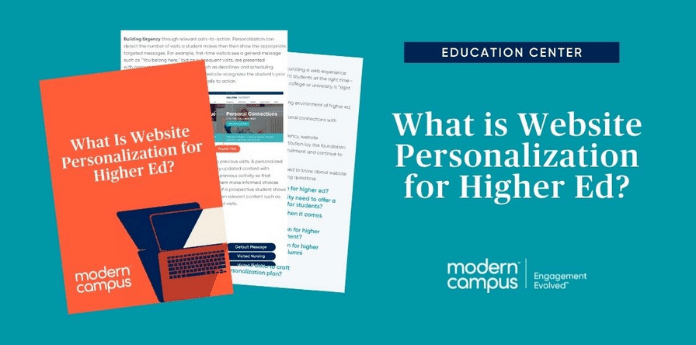
Whitepaper
Low-Code Web Design
How a next-generation CMS will change the way you manage your higher ed website

Tackle your biggest challenges
